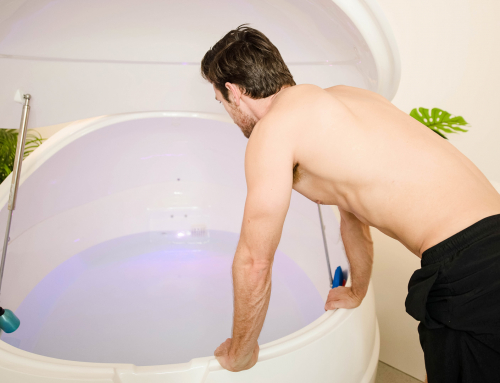Recently, I spent an hour floating in a 4-by-8 isolation tank filled with tepid salt water in a basement in Manassas, Va.
No, this wasn’t a “Silence of the Lambs” scenario. It was an exercise meant to bolster my sanity, not endanger it.
Floating in a tank of skin-temperature water saltier than the Dead Sea is said to induce an ethereal, meditative state — one that doesn’t necessitate furtive handoffs on street corners or haggling with sketchy dudes who listen to Grateful Dead bootlegs.
Flotation therapy businesses have been popping up around the country, including Bethesda, Md., where Kimberly Boone and Tomas Hyrman opened the Hope Floats spa in April, and Manassas, Va., where Stillness Flotation, now called Om Float Spa, debuted last year.
“The tank teaches you things about … the noise in your head — stuff that’s toxic and self-deprecating” says Brooks Brinson, who runs Om Float Spa out of his Manassas town house.
How does it work?
Researchers aren’t sure precisely why floating is restorative. Time in the tank may induce a neurological state similar to sleep, dialing down the sympathetic nervous system — the part of our brains associated with fight or flight — while turning up the parasympathetic nervous system, associated with rest.
Research also demonstrates the many benefits of the “restricted environmental stimulation technique,” or REST, a fancy name for the therapy. Studies show that REST may help people manage pain, battle anxiety and depression, quit smoking and lower blood pressure.
“You lose contact with where your body stops and the water starts,” Brinson says. The company motto: “Relax . . . Rejuvenate . . . Reconnect.”
Some say its curative powers go further.
Anette Kjellgren, a psychology professor who has studied flotation at Karlstad University in Sweden since the 1990s, says floating can help with a laundry list of conditions, including stress, muscular pain, addiction, fibromyalgia and disorders associated with whiplash. The technique can also facilitate traditional psychotherapy and even help address ADHD and autism spectrum disorders, she said.
These apparent benefits have yet to be tested rigorously enough to prove flotation’s effectiveness. But some researchers are convinced enough that they have become floaters themselves.
“The first 10 minutes are very long,” says Paul Morgan, a research associate at the University of Pittsburgh and an avid floater. Morgan co-authored a paper showing that, after exercising, floating decreases lactate in muscles faster than just, say, lying down. “Then you have the anxiety of ‘Are my legs still there? Where am I in the tank?’ The next thing I know, I’m waking up,” he said.
“The first time, they forgot and left me in the tank,” Kjellgren said. Several hours in the tank offered “a very intense and interesting experience,” she said, and she has since floated hundreds of times.
“If they had taken me out after 45 minutes, as planned, I would probably never have become a flotation tank researcher,” she said.
For me, the experience was like Zen meditation: boring at first, then over in what seemed like seconds. Suspended in about two feet of 94-degree water filled with Epsom salt, I didn’t just feel relaxed, I felt like the giant baby at the end of Stanley Kubrick‘s “2001: A Space Odyssey.”
But the positive effects of floating — a sense of peace, clarity and general good humor — didn’t stay in the basement. After I got out of Brinson’s tank and showered, I figured that was it.
“Your float is not done yet,” he warned.
My hourlong drive back to Washington proved him right. Though I found my return to everyday existence slightly irritating, colors were more lush. The world seemed enhanced, like watching HDTV. Driving on the highway, I felt like Neo fighting Agent Smith at the conclusion of “The Matrix,” navigating one of America’s most congested regions but feeling like I was lane-shifting in slow motion.
When I stopped to get gas and a snack, plantain chips never tasted as plantainy. I’m no banterer, but when I called my stockbroker from the road, I asked her whether she was having a wonderful day. And when I left a voice mail for myself at work so I wouldn’t forget a story idea, I cracked up. It’s me, I thought, leaving a message — for me!
Why not just say it? I was high.
“You become a consciousness floating in a void,” Brinson says.
Preconceptions
If all this sounds a little too kooky, it’s partly because of flotation’s checkered history. The practice was pioneered in the 1950s by physician turned psychedelic adventurer John C. Lilly, perhaps best known for his work on communication between humans and dolphins.
In 1980, William Hurt turned into an amoeba in the flotation-themed horror film “Altered States.” And flotation’s main celebrity endorser is Joe Rogan — a bawdy comedian, “Fear Factor” host and Ultimate Fighting Championship announcer who is also really into marijuana.
“Everybody should do the tank,” Rogan, who declined to be interviewed for this story, said in 2010. “You will learn more about yourself than in any other way.”
There was also Nobel Prize-winning physicist Richard P. Feynman, who wrote about his attempts to hallucinate while floating (after smoking marijuana and using the drug ketamine).
But consider that the Dallas Cowboys and the Philadelphia Eagles used flotation in the 1980s to help players focus. The Cowboys’ units were equipped with closed-circuit televisions that allowed floating players to watch games. (Linebacker D.D. Lewis called it “the think tank.”)
Brinson also found flotation helped him compete — as a shooter.
“It’s really a very mental game, the most mental in the Olympics,” says Brinson, the Texas air pistol champion in 2007 and 2008.
“It’s about learning to focus your mind,” Brinson says. “The tank is a perfect tool for that.”






